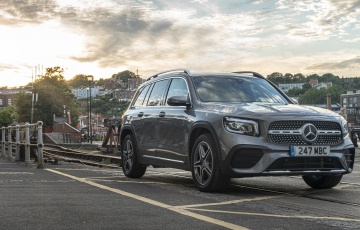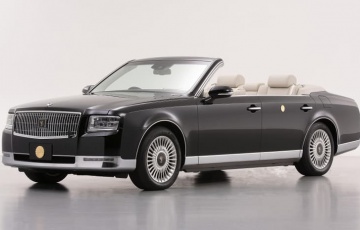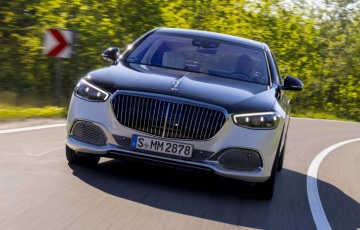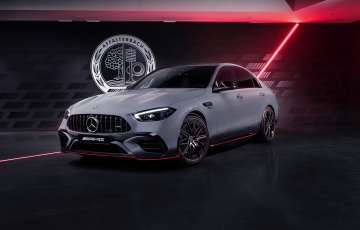Plug N Play : 2021 Mercedes-Benz EQC 400 4MATIC [review]
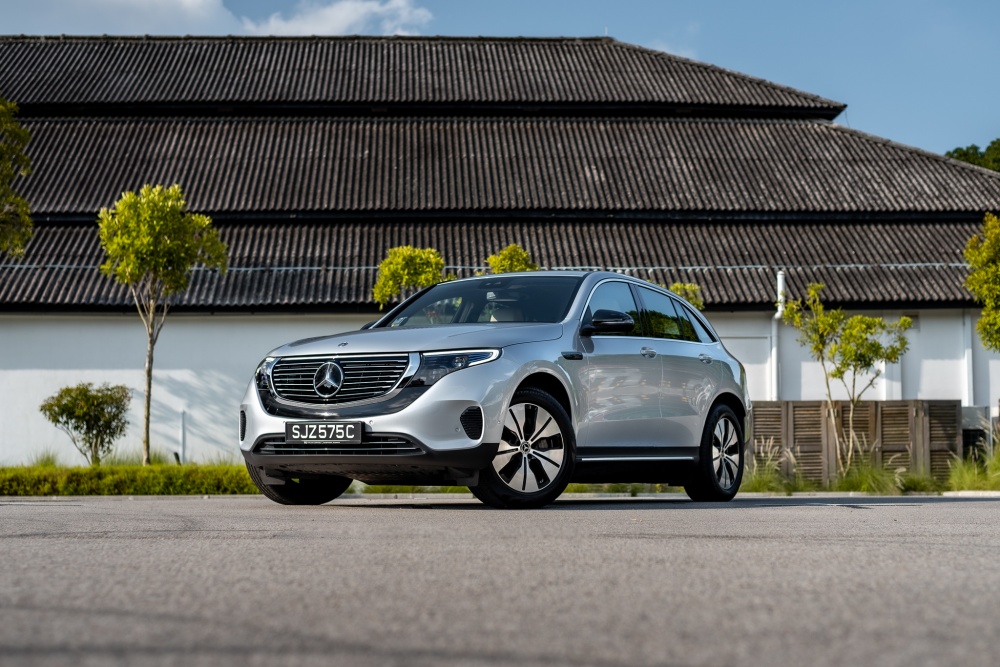
Mercedes-Benz EQC 400 4MATIC 2021 Review : Plug N Play
Singapore - There’s no denying it, the age of electrification is officially upon us.
We Singaporeans are no strangers to the ever-growing slew of hybridised vehicles (plug-in, mild or series) and electric vehicles that are saturating the local automotive market, each one promising better performance, range and efficiency than the next.
And now, the venerable three-pointed star has entered the fray with the all-electric EQC 400 4Matic to compete against the likes of the Audi e-tron and BMW iX3.
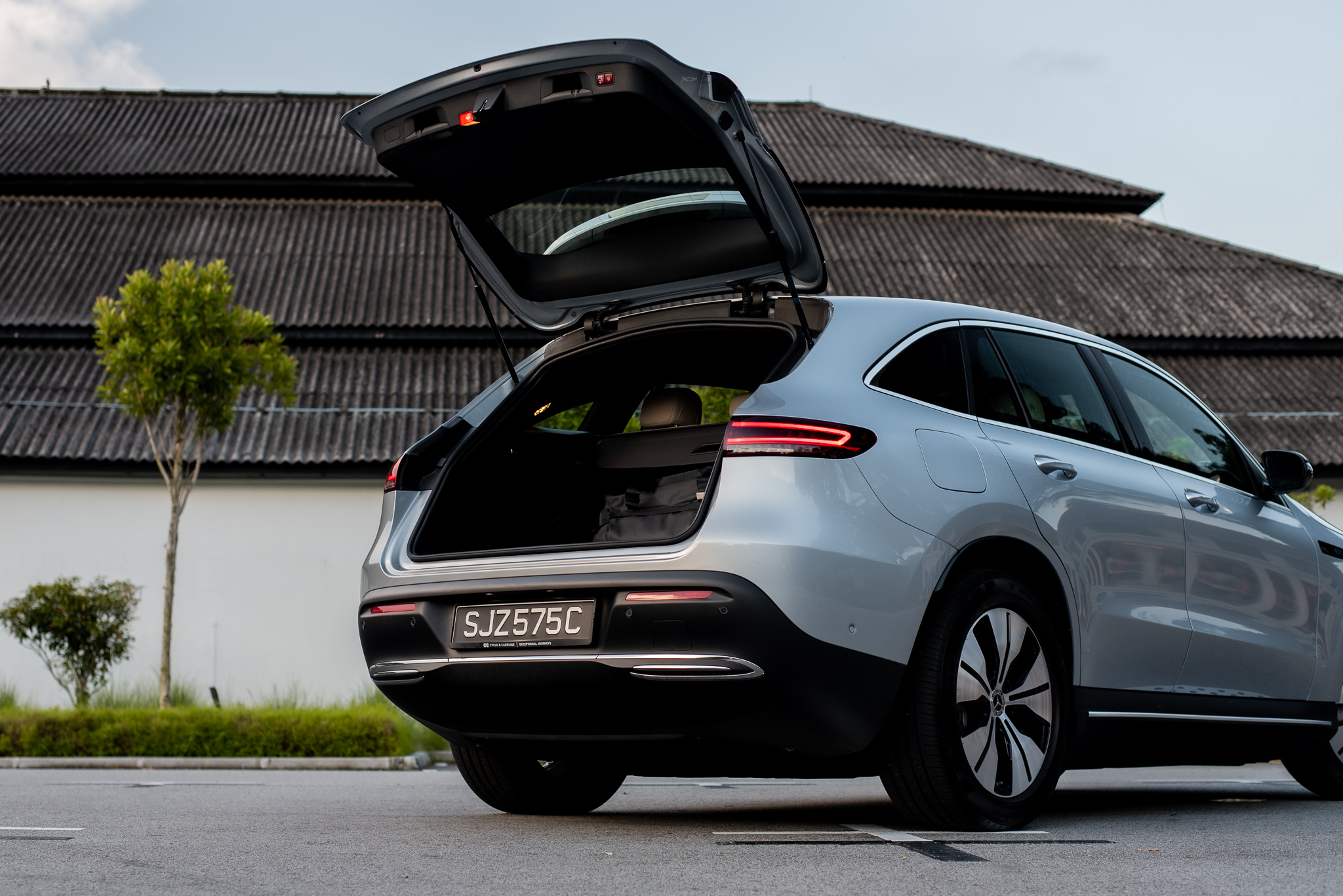
At a glance, you may think it looks like a rather discombobulated Mercedes GLC-Class crossover.
That’s because the EQC shares similar underpinnings with the GLC-Class and C-Class, both of which are based on Mercedes’s MRA-platform. But I wouldn’t go that far as to call it a retrofit all-electric derivative of the petrol-powered GLC.
Apart from some bits from the Mercedes-Benz parts bin, the EQC is an entirely different proposition altogether.
The brand is no stranger to EVs (take the electric B-Class and SLS AMG Electric Drive for instance) and the EQC is the fruit of Mercedes’s prior forays into electrification, which have been distilled into this mid-sized crossover.
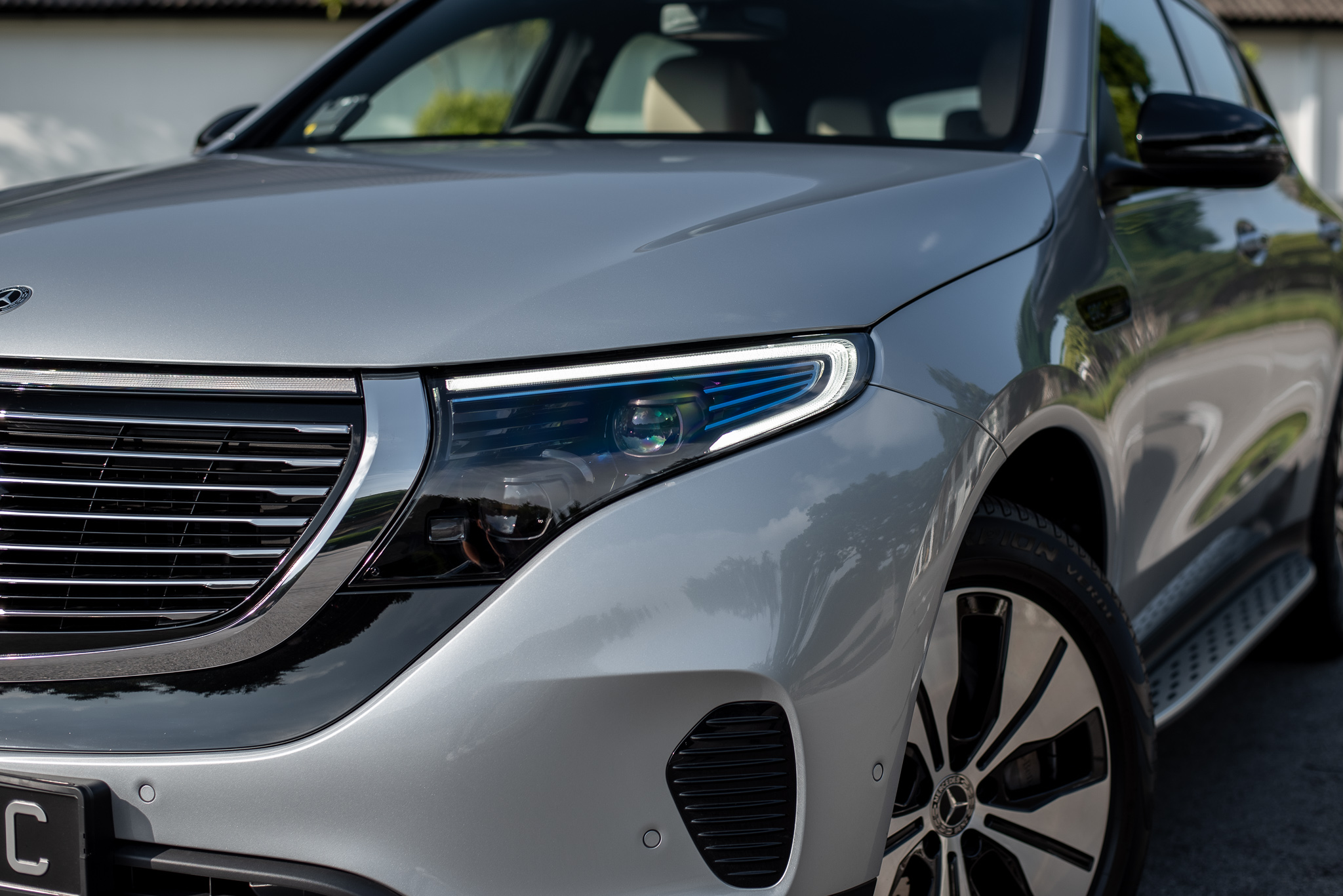
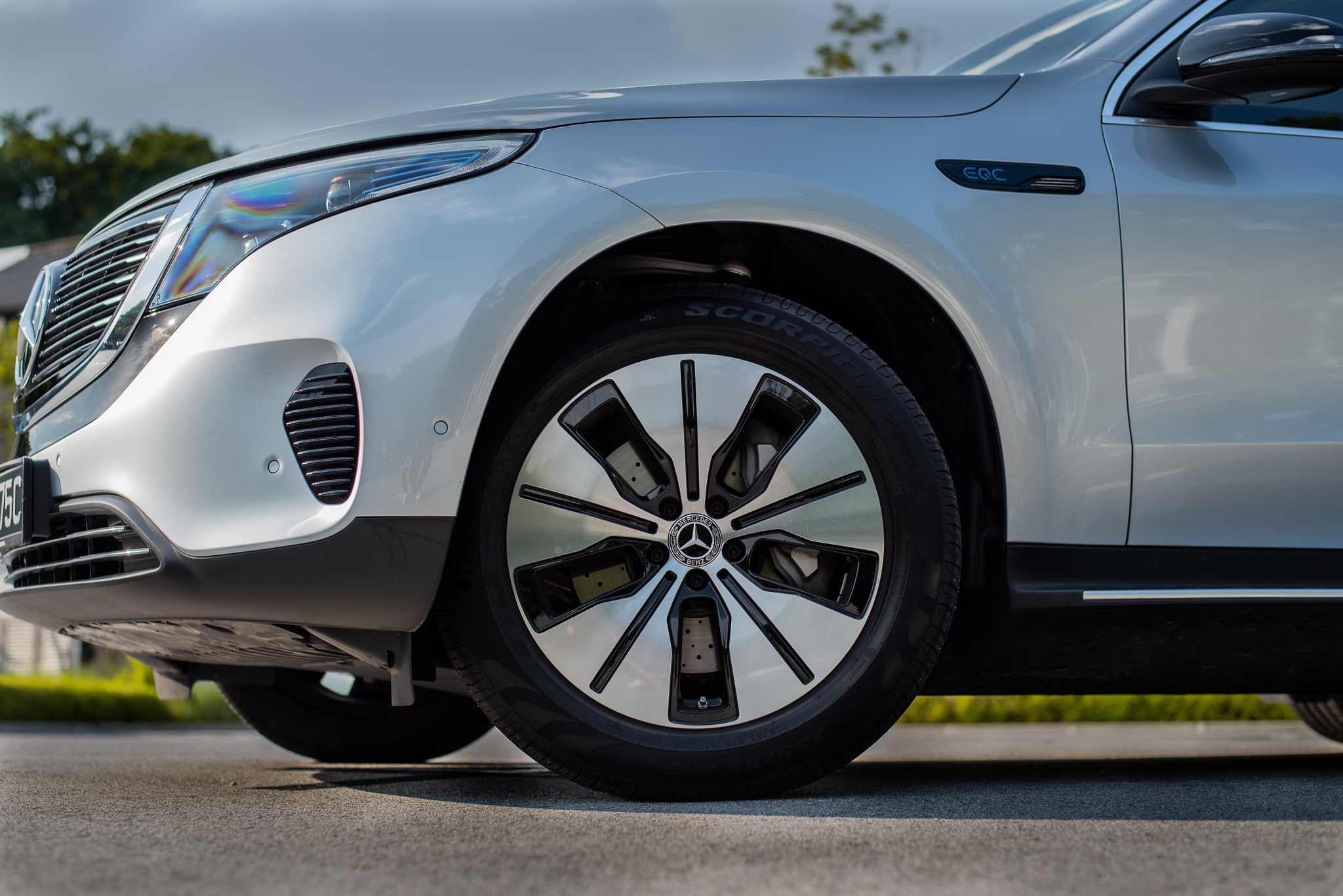
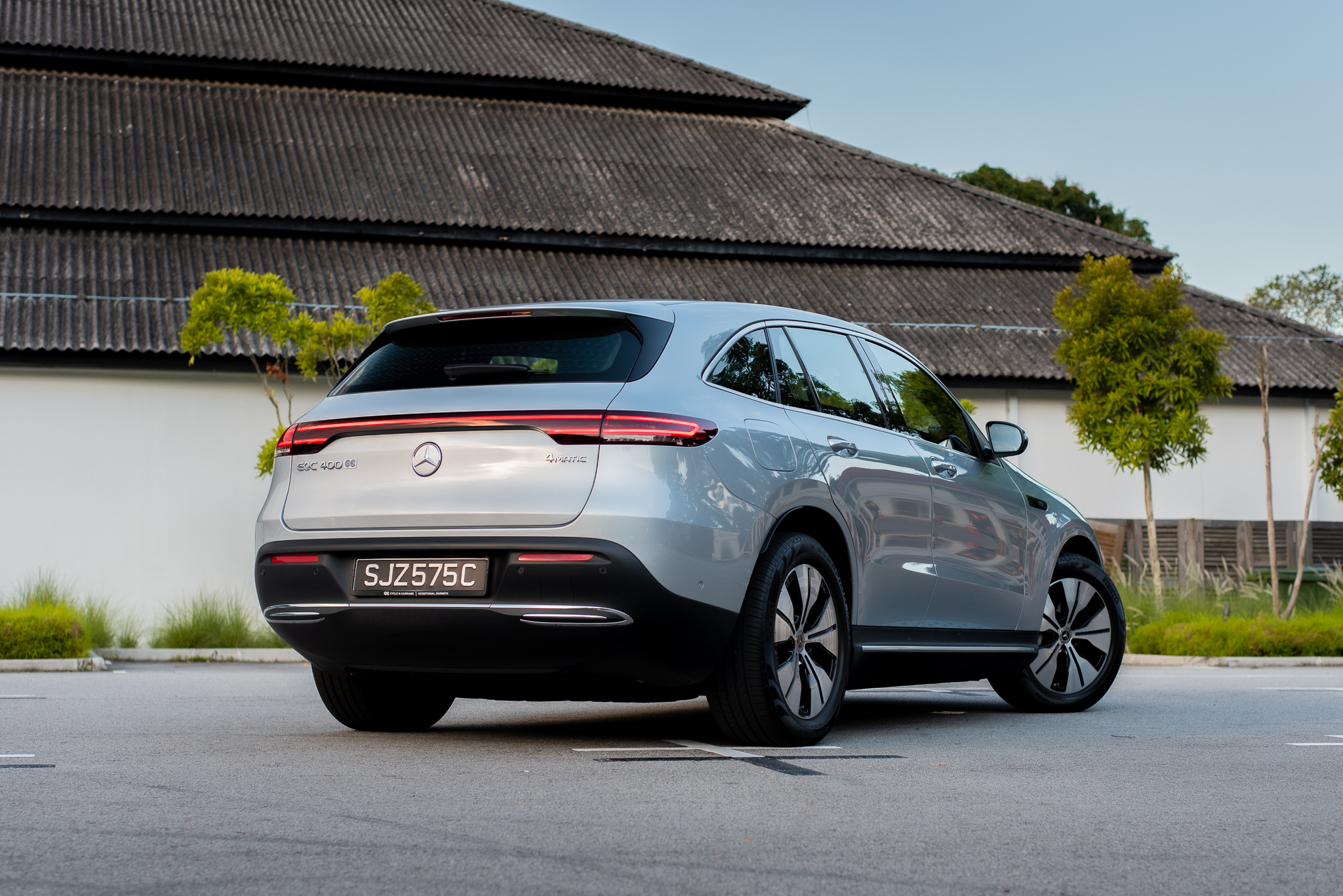
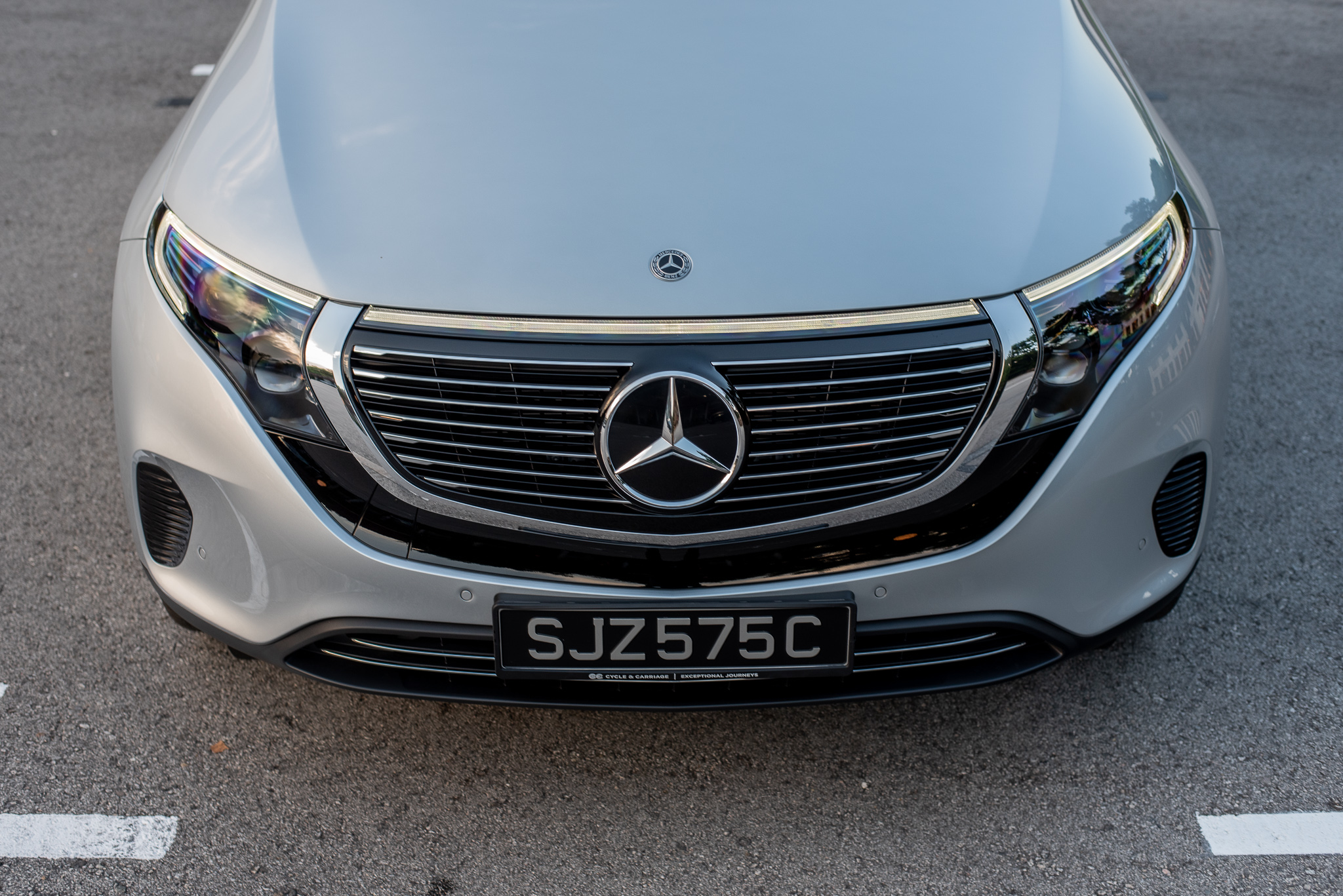
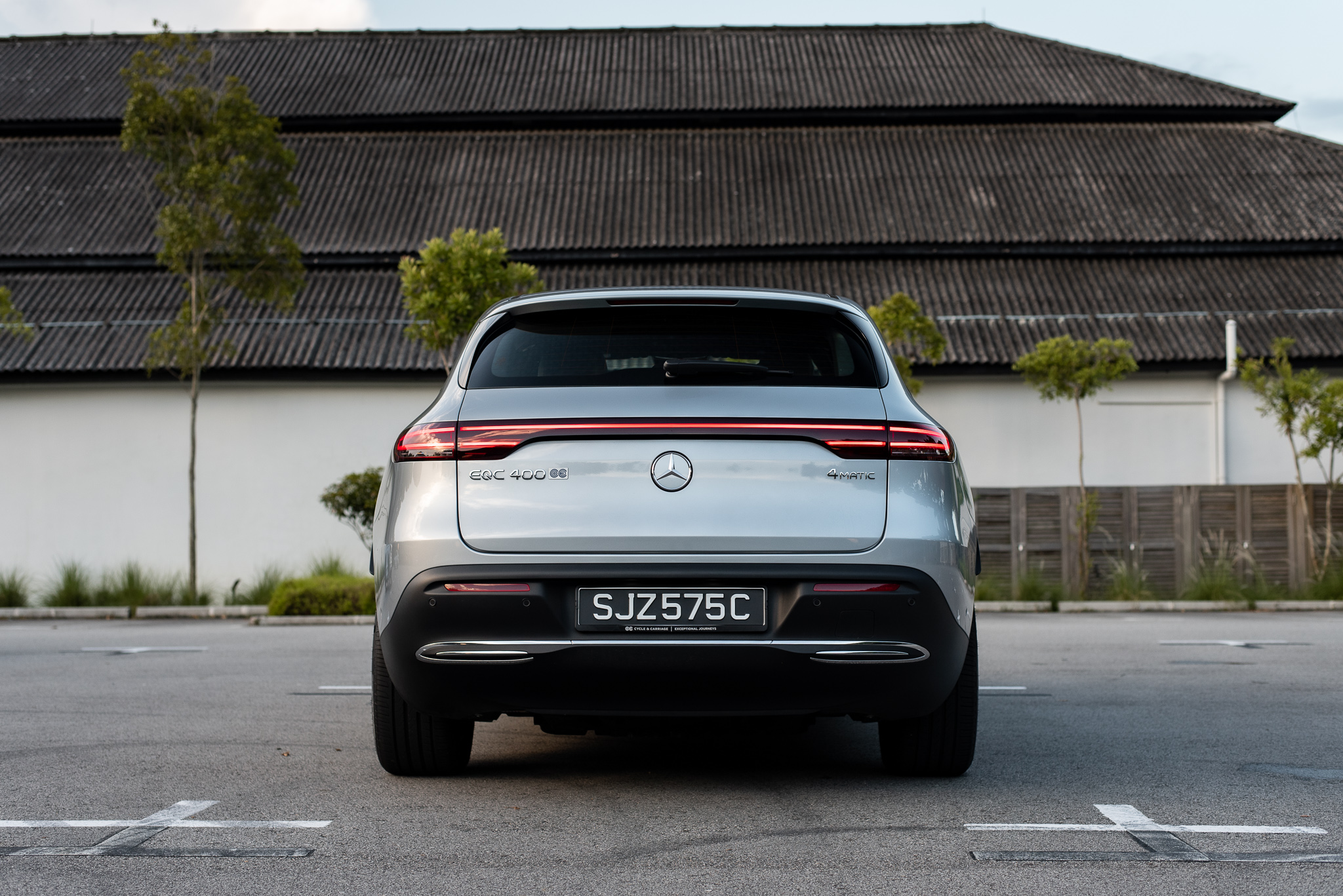
Granted, the EQC’s body shell has been extensively reworked to make this large car as streamlined as possible.
As a result, it looks unlike any other Mercedes vehicle on the road today. The car’s contours are sleeker than its petrol-powered counterpart, with a smoothed out grille and slippery body lines designed to reduce wind resistance.
The headlight units meld into the massive grille and form a cohesive LED light bar.
The rear taillights are similarly styled too, with a continuous illuminated strip that spans the rear.
The canted roofline of the EQC also gives the car a slight coupé-like silhouette. All the aesthetic traits that give the EQC a distinct appearance also contribute to the car’s low drag coefficient of just Cd 0.27. Not bad for a Merc of this size.
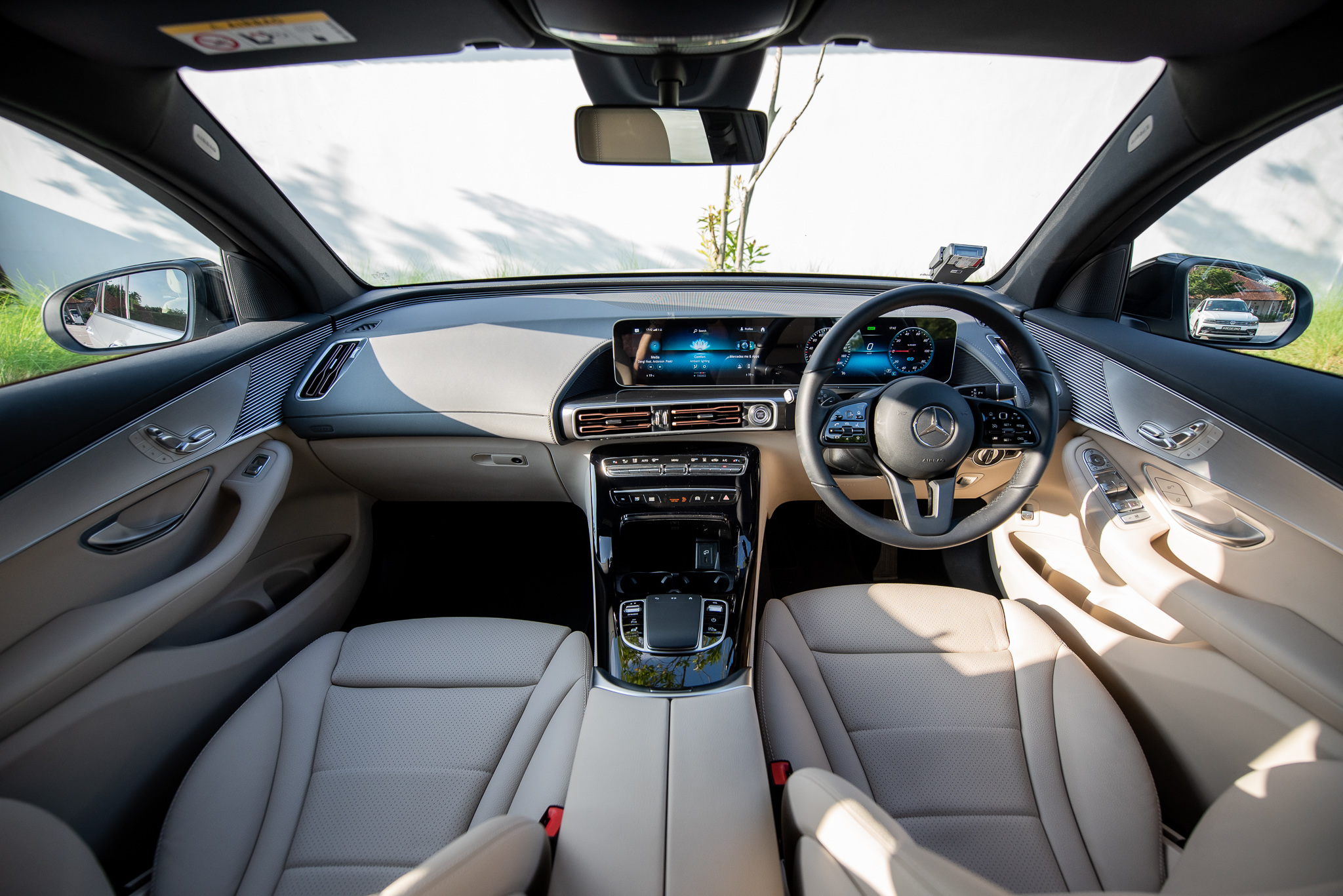
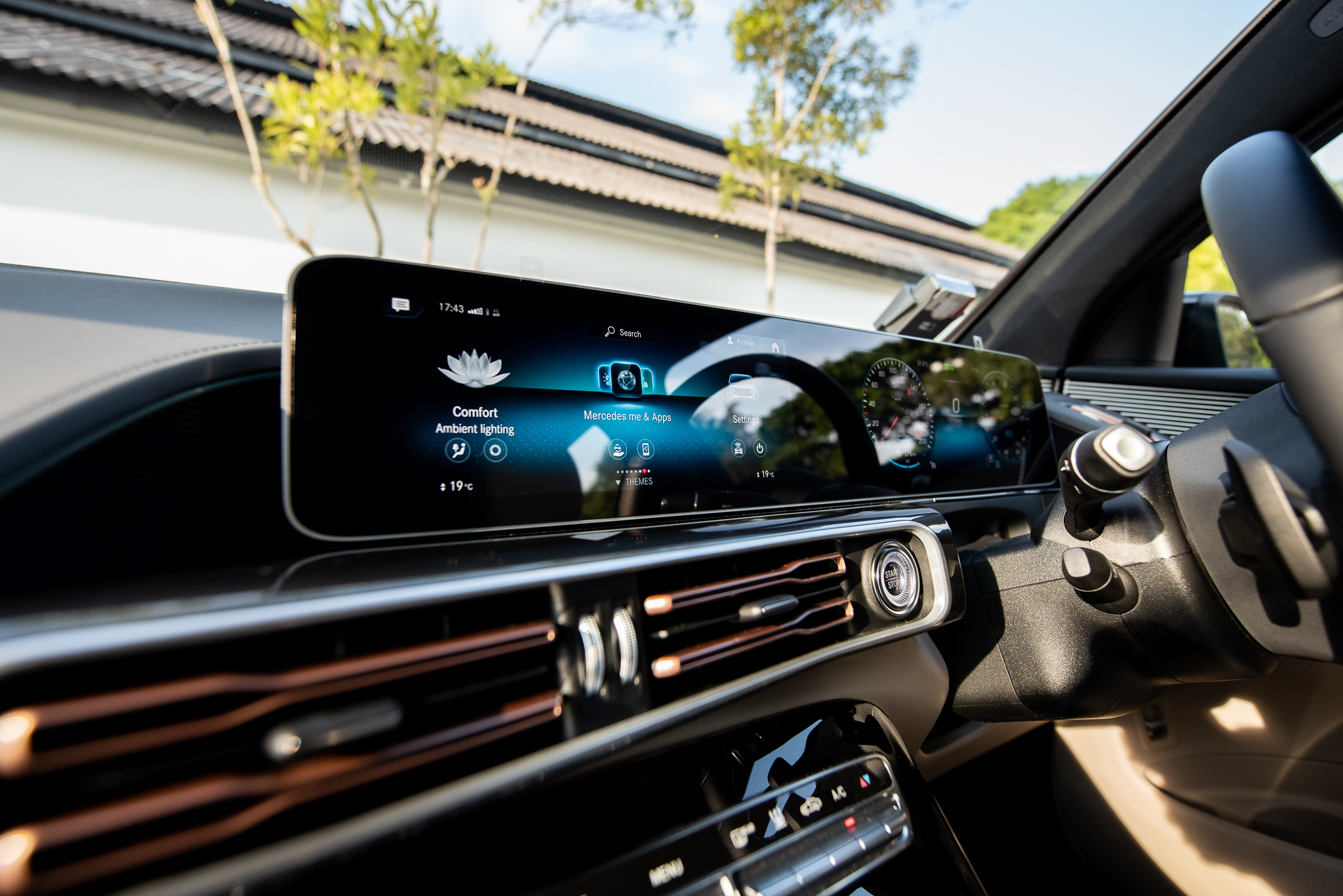
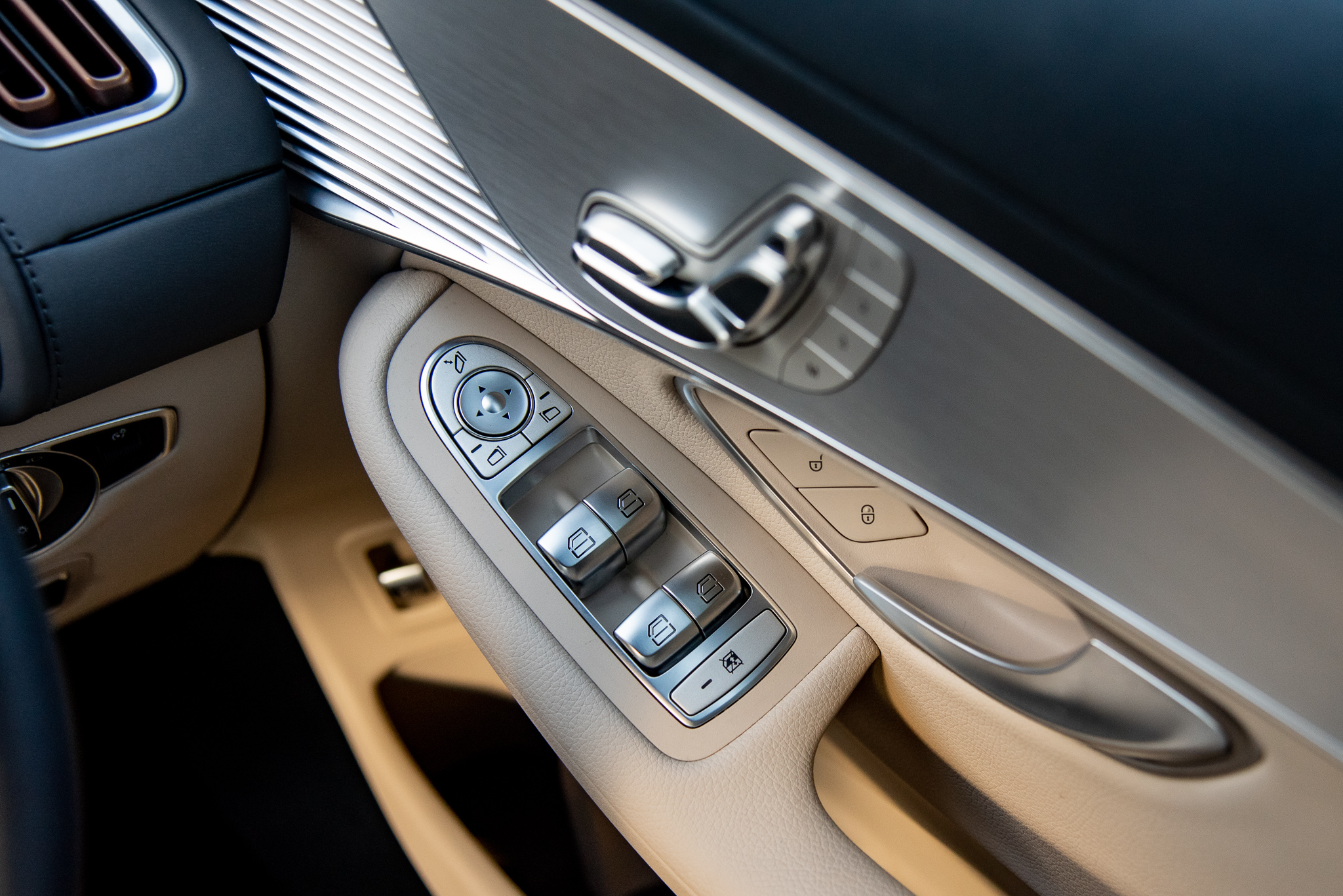
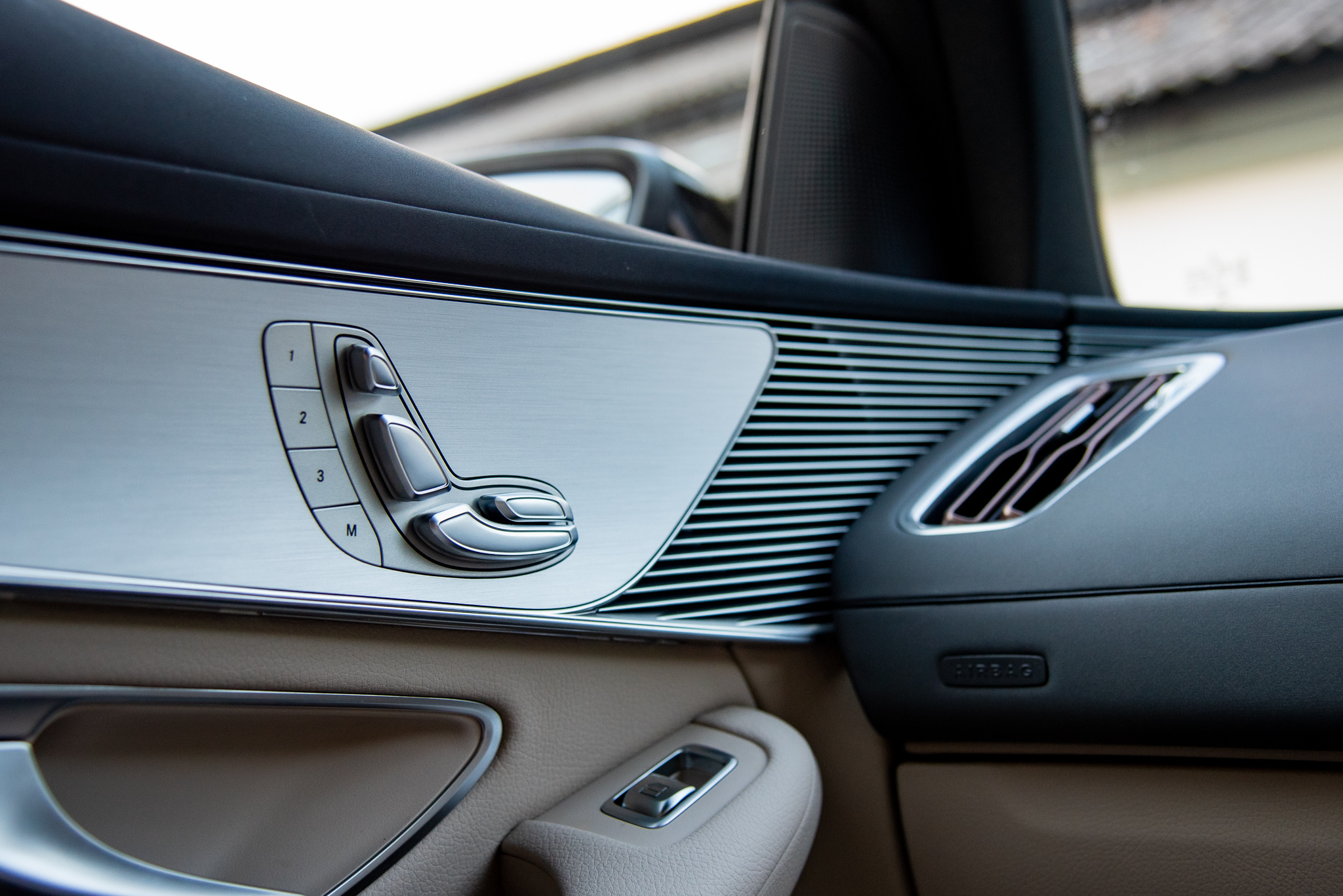
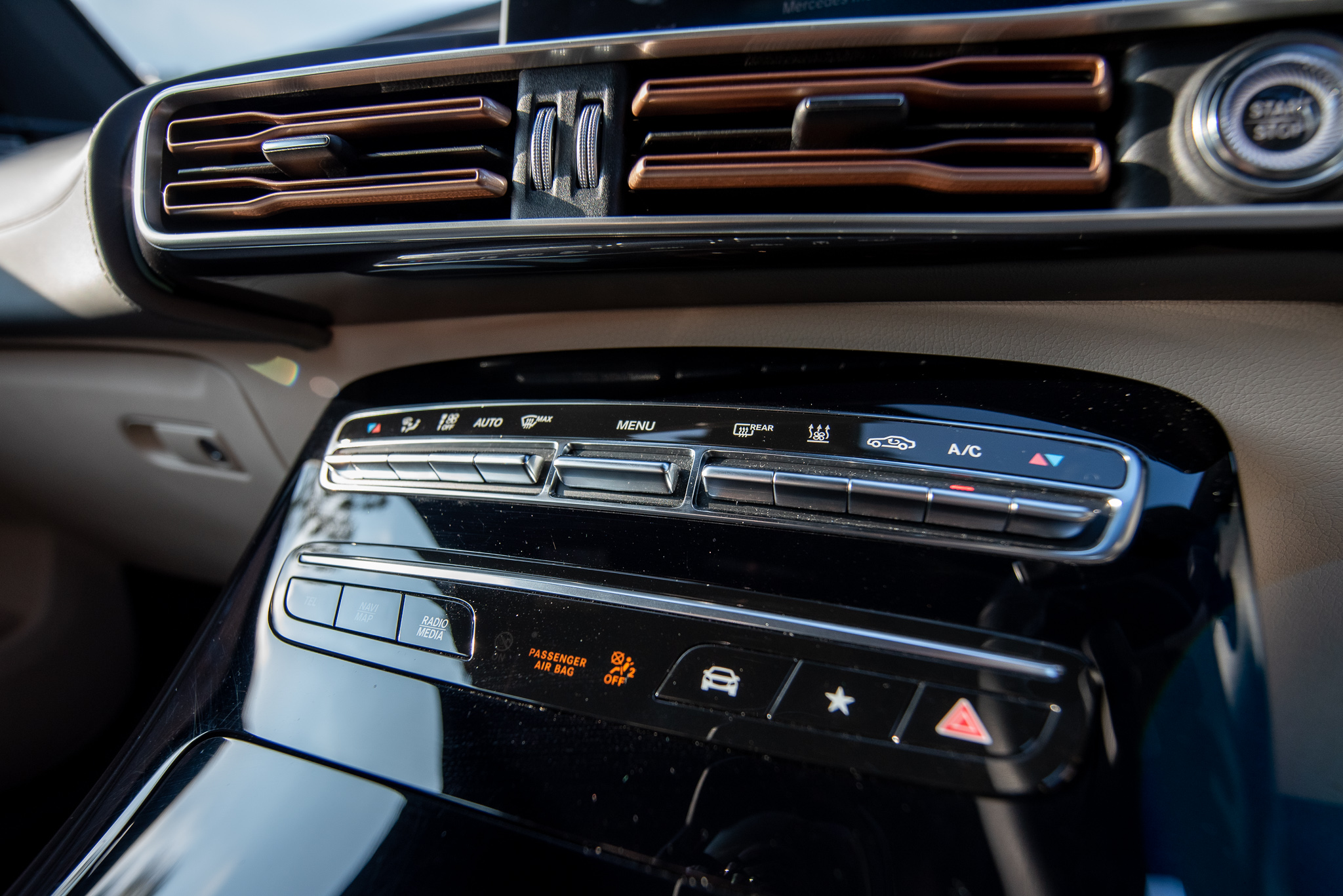
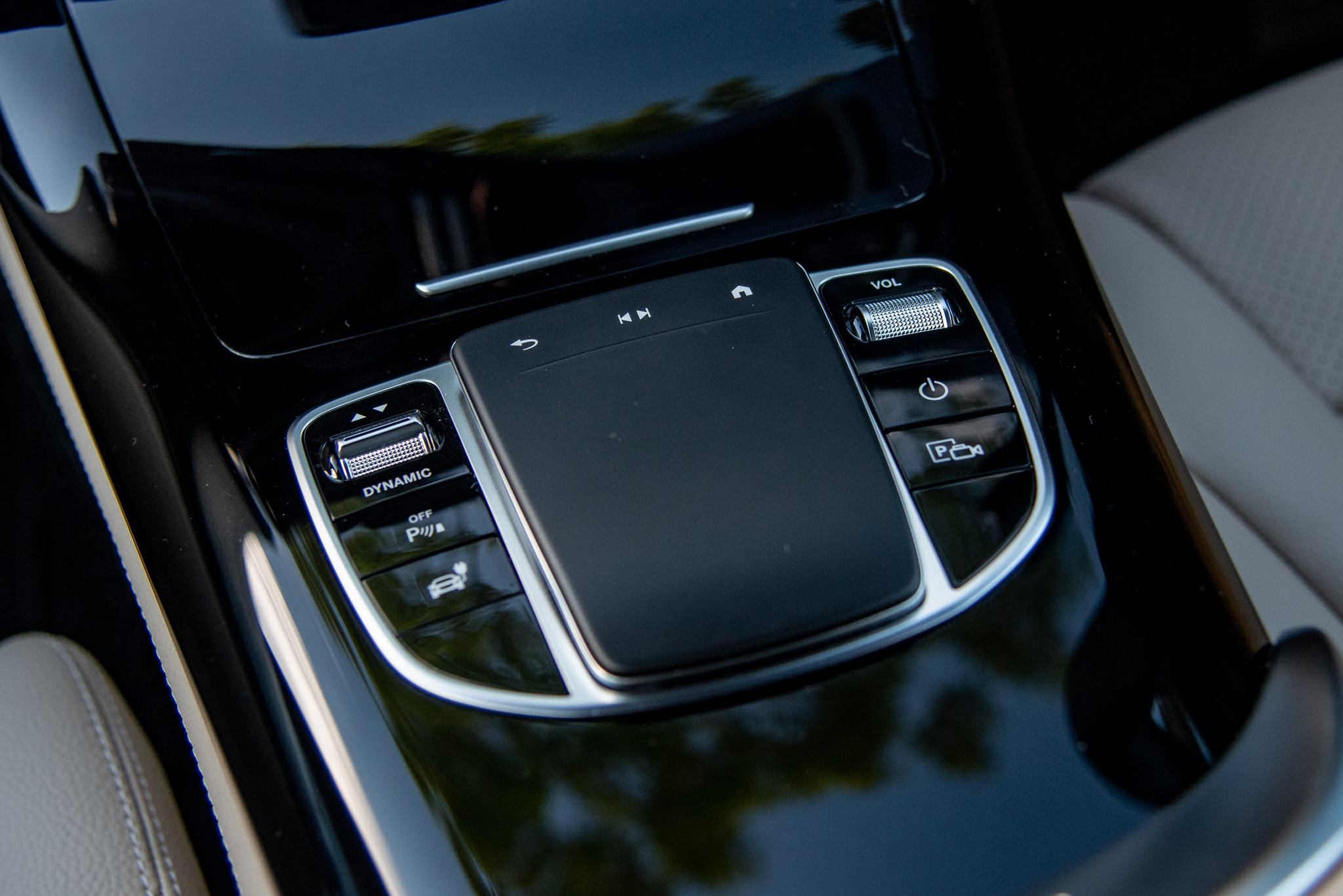
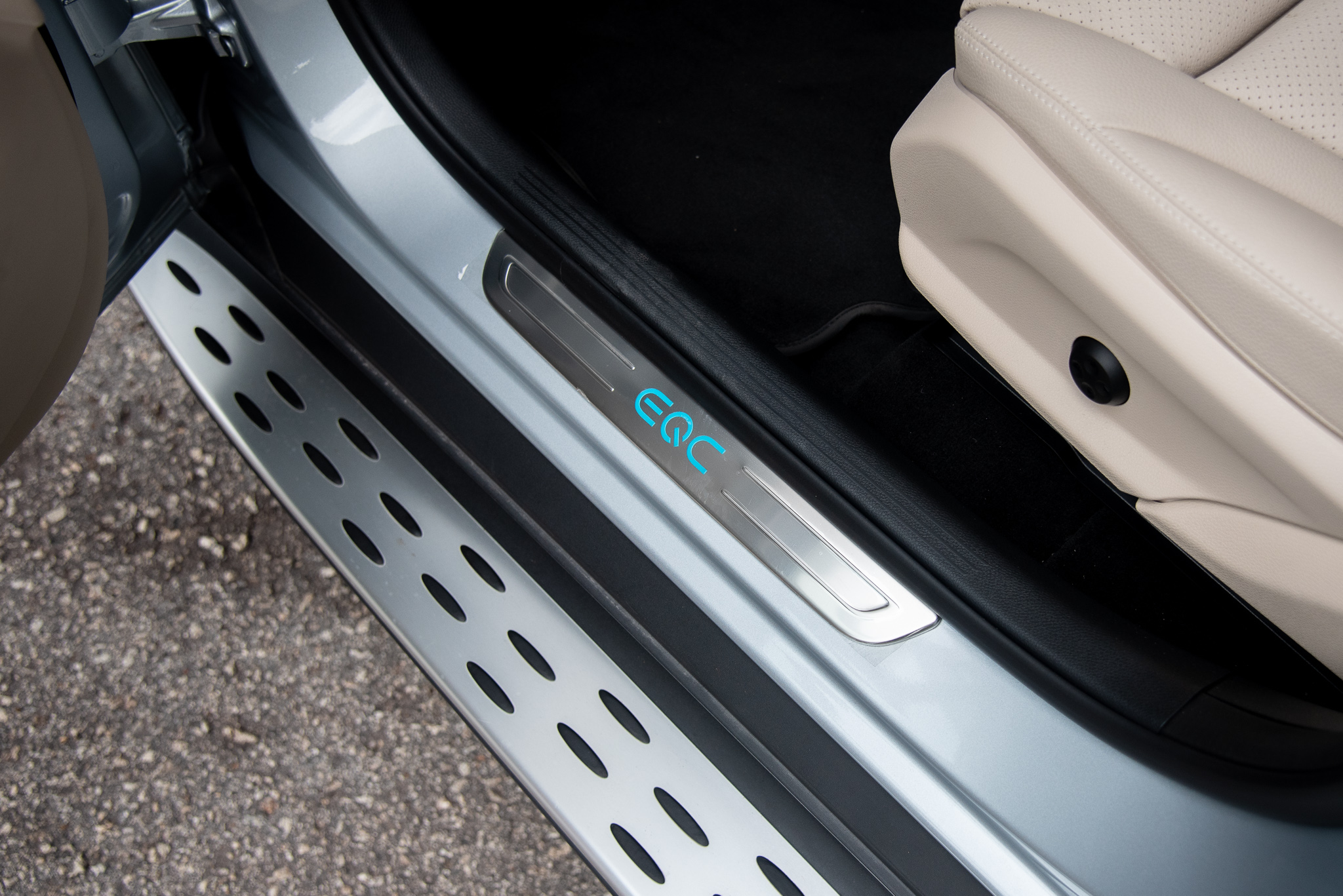
The EQC shares much of its interior with the GLC, with similar levels of refinement. The centre stack is identical to the latter, with air-conditioning vents and copper-hued highlights differentiating EV from ICE.
The steering wheel and paddles are not unlike the ones you’d find in a conventional Mercedes.
However, in the EQC, the paddles are used to vary the level of brake regeneration when you're off the throttle, so one can vary this between mild... to wild.
Even the MBUX interface and peripherals are lifted from Mercedes’s newer models. It truly is a Mercedes through and through.
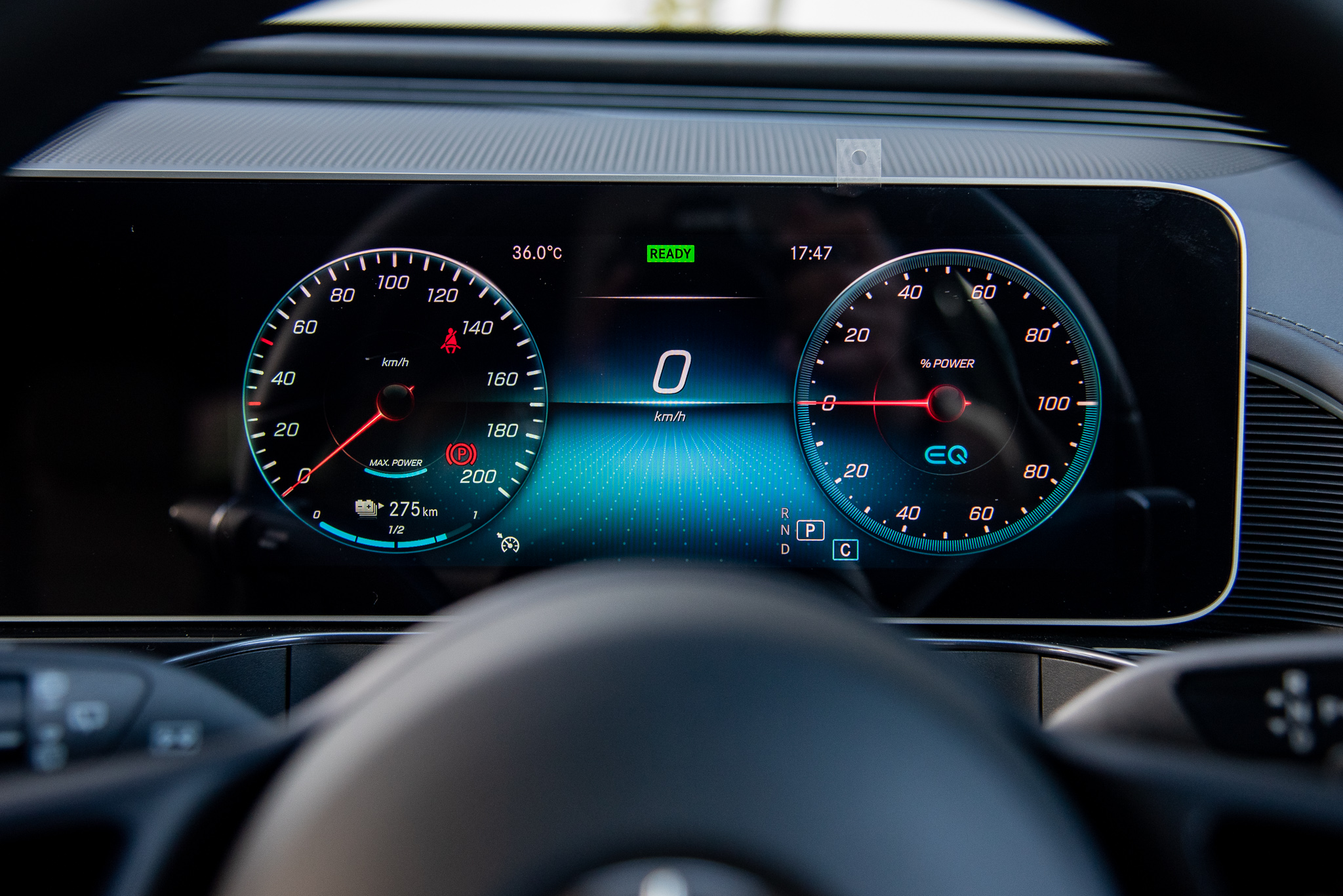
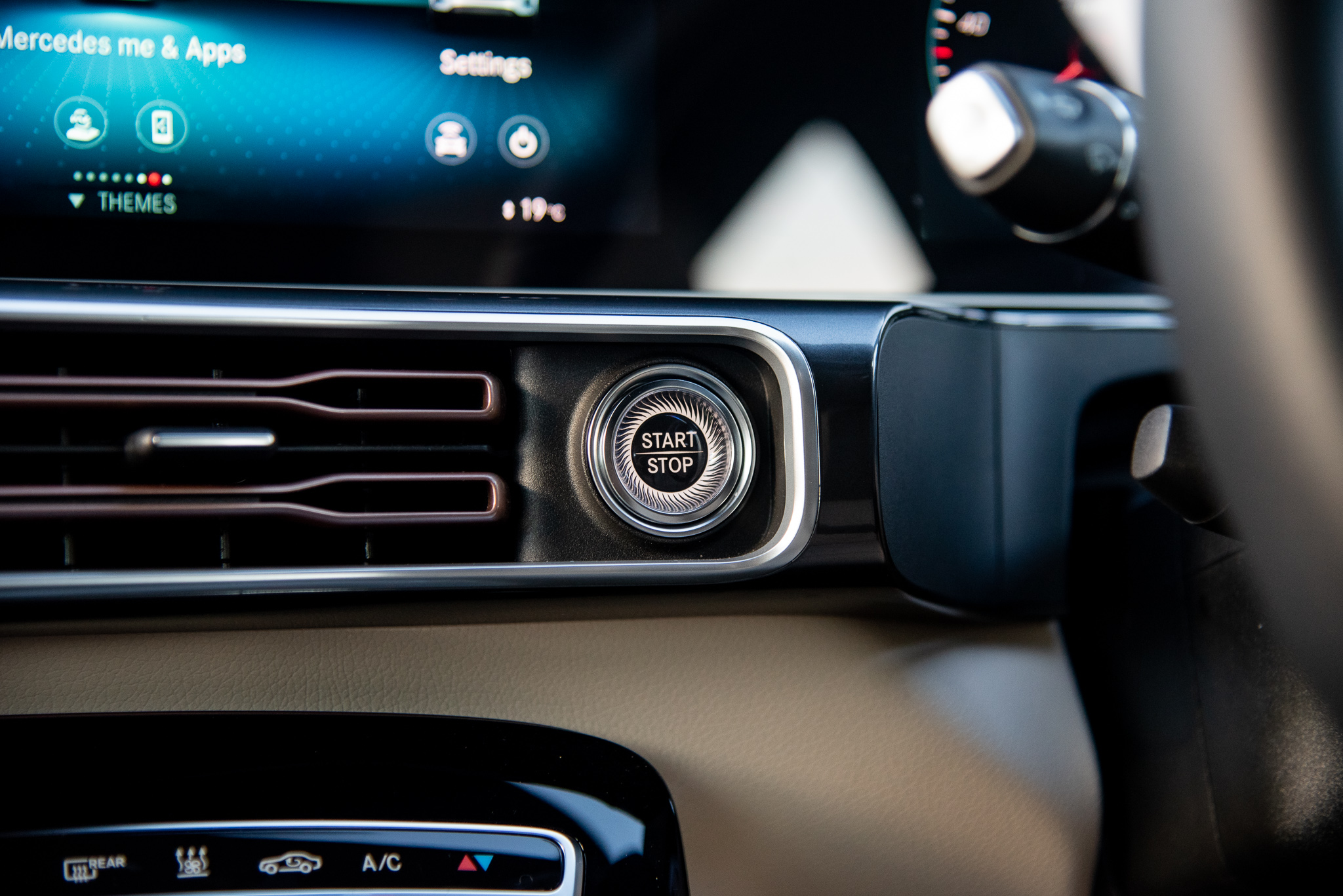
But then you 'fire' it up and you’re met with an eerie silence, with a green 'ready' icon on the dash the only indication the EQC is powered up.
Don't forget, when it comes down to an EV's bare bones, there are considerably fewer moving components to contend with - case in point, the internal-combustion engine and its ancillaries!
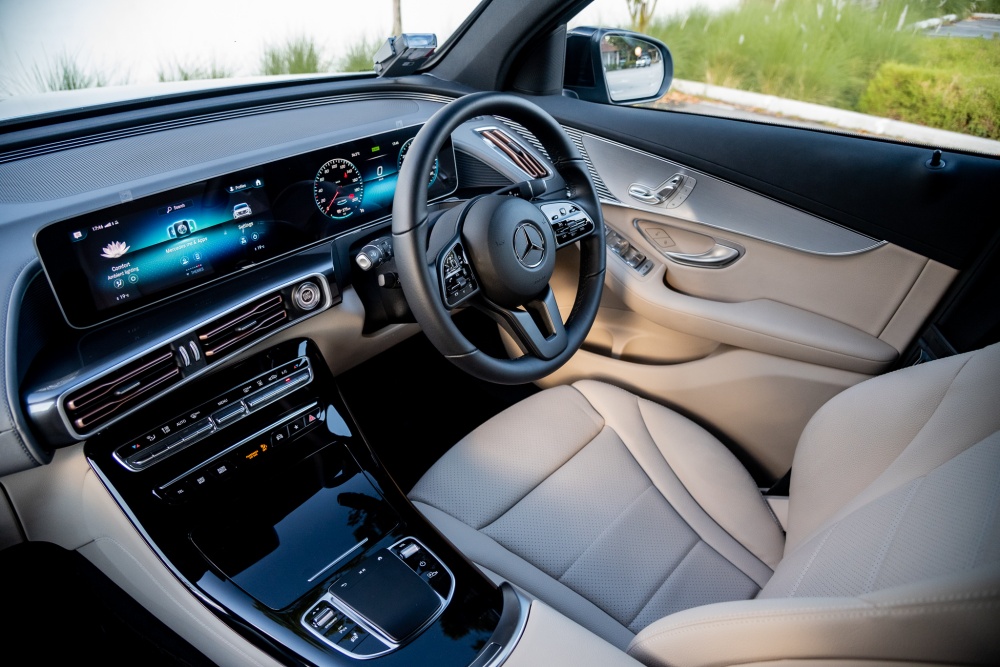
Once you get going, you’re struck by how quiet the EQC is. There isn't much in the way of road or wind noise, and you really have to strain your ears to notice the whine from the motors.
The car doesn’t provide any auditory feedback from the speakers when you accelerate. All you’re met with is a relentless surge as the motors propel you to highway speeds.
Put your foot down, and you’ll be pinned to your seat as all 408hp/760Nm is dispatched in an instant.
For the numbers people, the crossover will dispatch the 0-100km/h run in just 5.1secs.
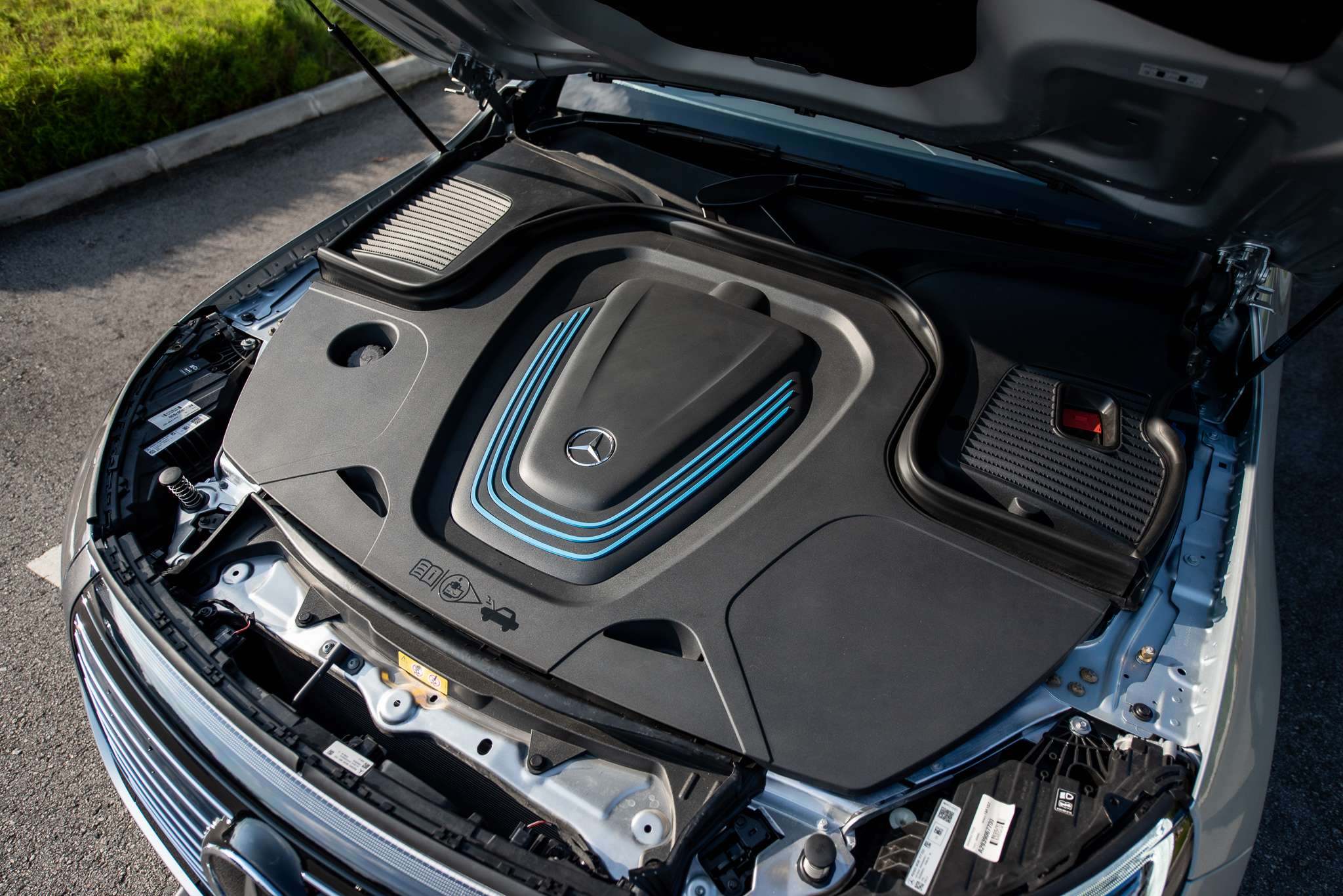
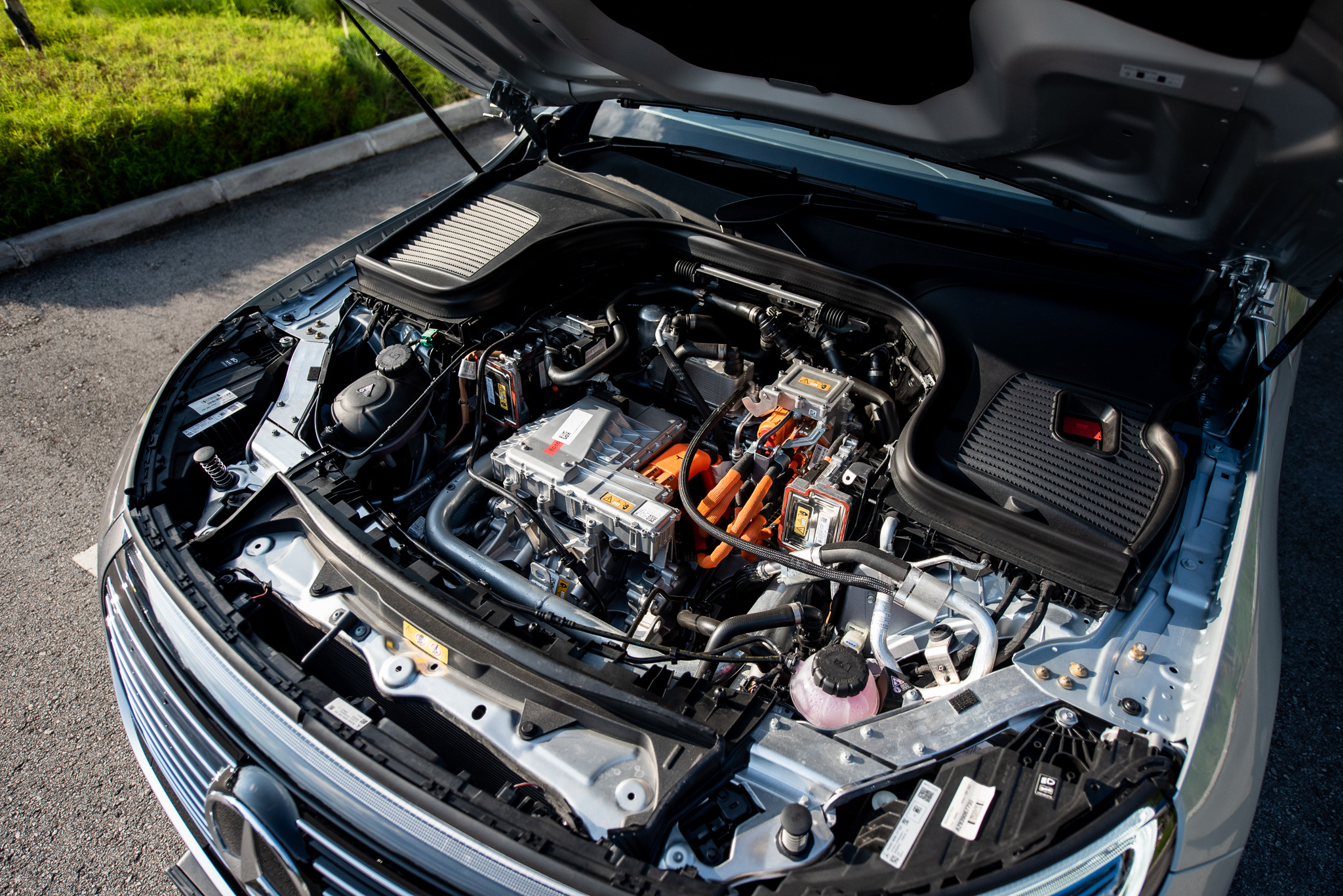
Under the bonnet resides a plastic cover instead of a front trunk. Peel that back, and you’re met with a cluster of bright orange high voltage cables and the front motor tucked low in the 'engine' bay. The second motor that drives the rear wheels sits beneath the boot floorboard.
Despite being based on the primarily rear-biased GLC-Class, the EQC is a predominately front-wheel-drive vehicle.
Both motors produce an equal amount of power, but the rear motor is only called upon when more performance is needed, or to straighten out the back end when the driver decides to get a little mischievous.
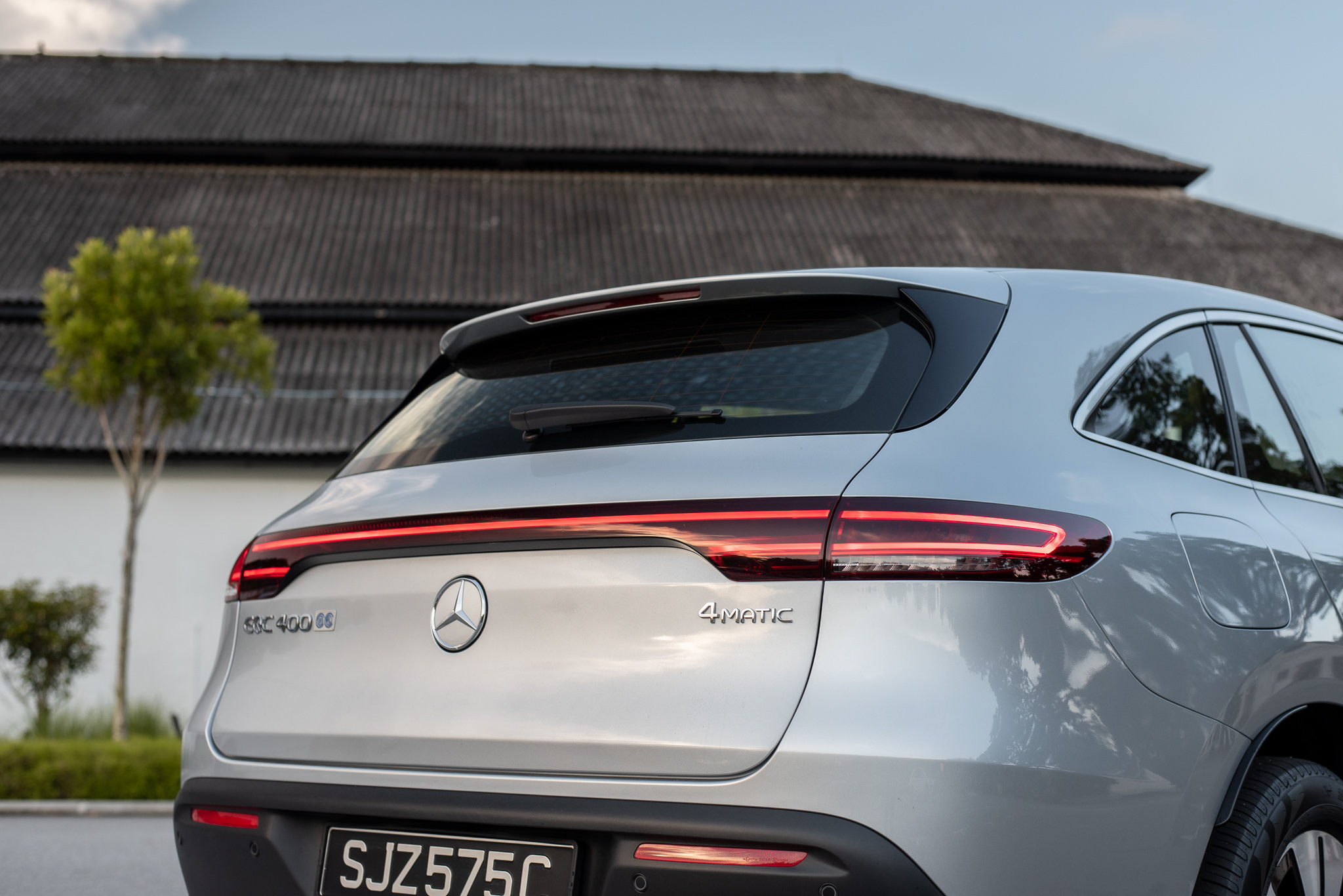
Despite the trick 4MATIC system distributing power between both axles, the EQC is a heavy vehicle that tips the scales at 2,495kg. You’d think the mass of batteries in the floor pan would effectively lower the car’s centre of gravity to keep it planted through corners, but the reality of it is far from the truth.
Corner at speed and you will feel its 2.5-tonne kerbweight. That weight, coupled with the comfort-biased suspension makes the EQC roll and pitch noticeably. I took the car out on a jaunt with a couple of mates and found them reaching for the grab handles on multiple occasions.
The comfortable cornering poise of the EQC is surprising considering it sits quite low to the ground. The blacked-out plastic sections of the bodywork give the illusion of a raised ride height but make no mistake, it rides fairly low despite wearing the shape of an SUV.
It isn’t all bad though, because a prod of the throttle on straight stretches let you make up for whatever time you’ve lost navigating the corners. The car makes quick work of overtaking manoeuvres and has plenty of shove for that extra burst of speed off the line.
I invited my parents out for a quick spin in the car and my dad, a veteran driver of almost 40 years with no prior experience in EVs, scoffed and rebuffed my claims when I pre-empted him about the car's shocking pace. Until I buried my foot into the throttle, that is. Needless to say, his scepticism was quickly replaced with shock and awe. And a slight tinge of fear.
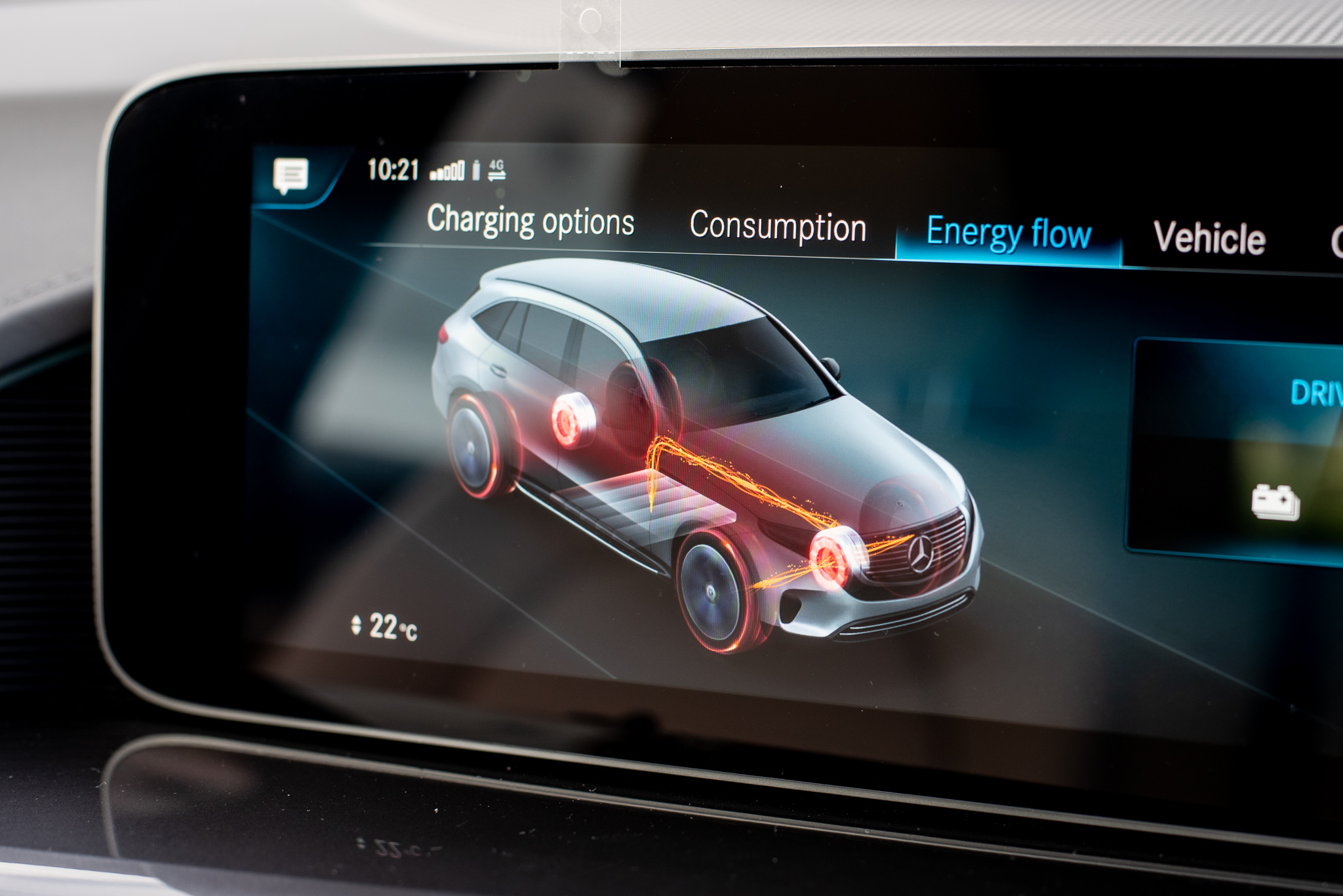
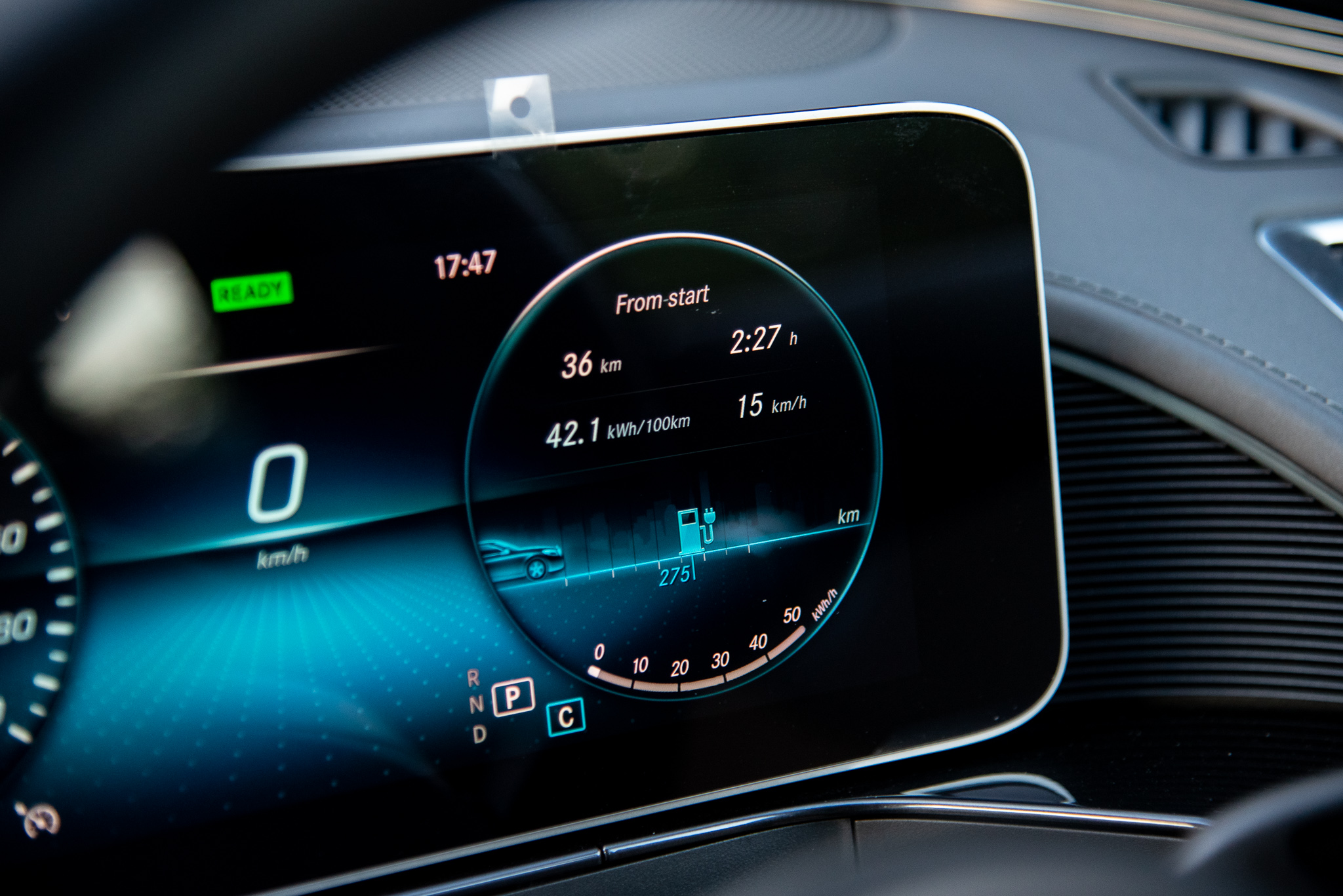
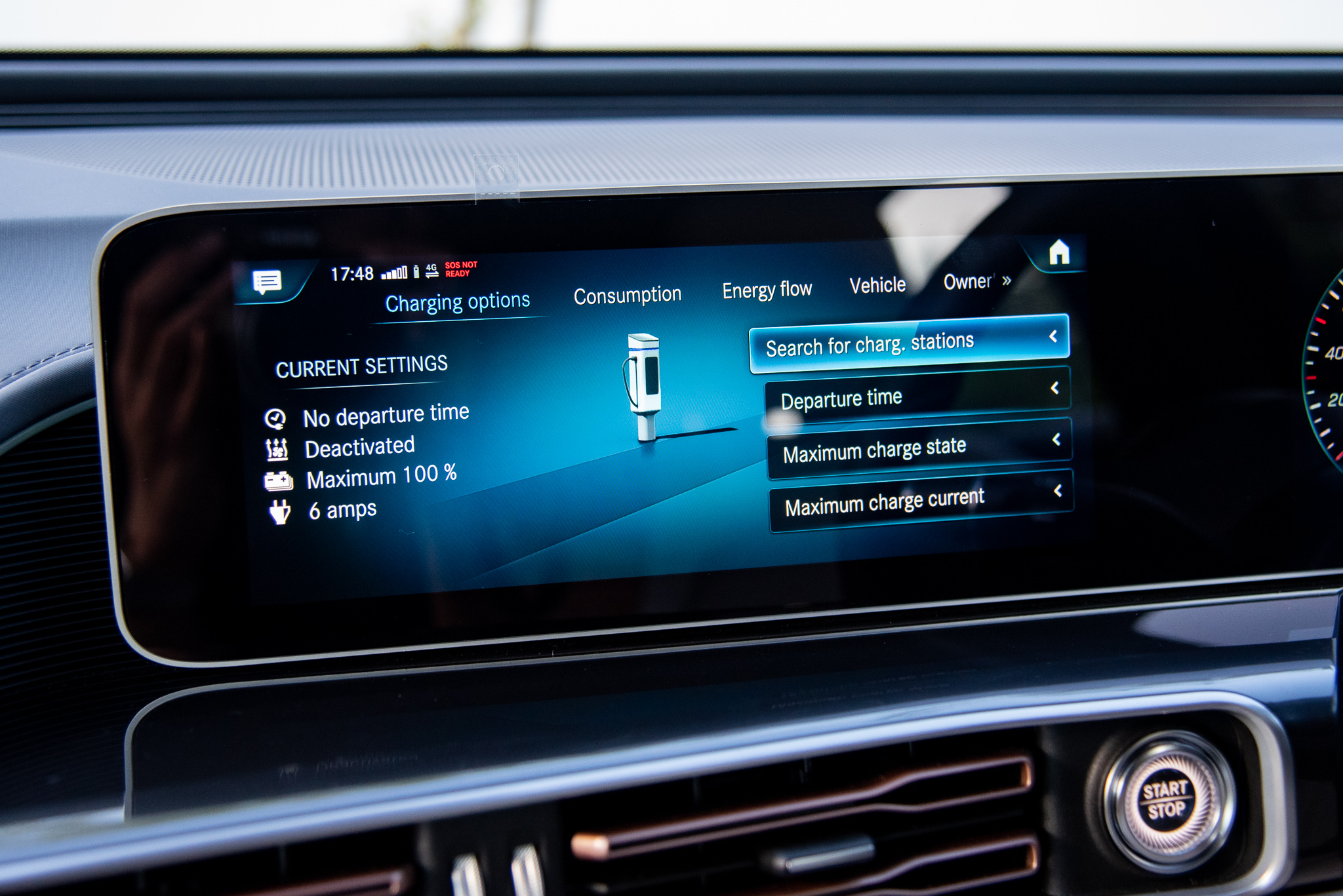
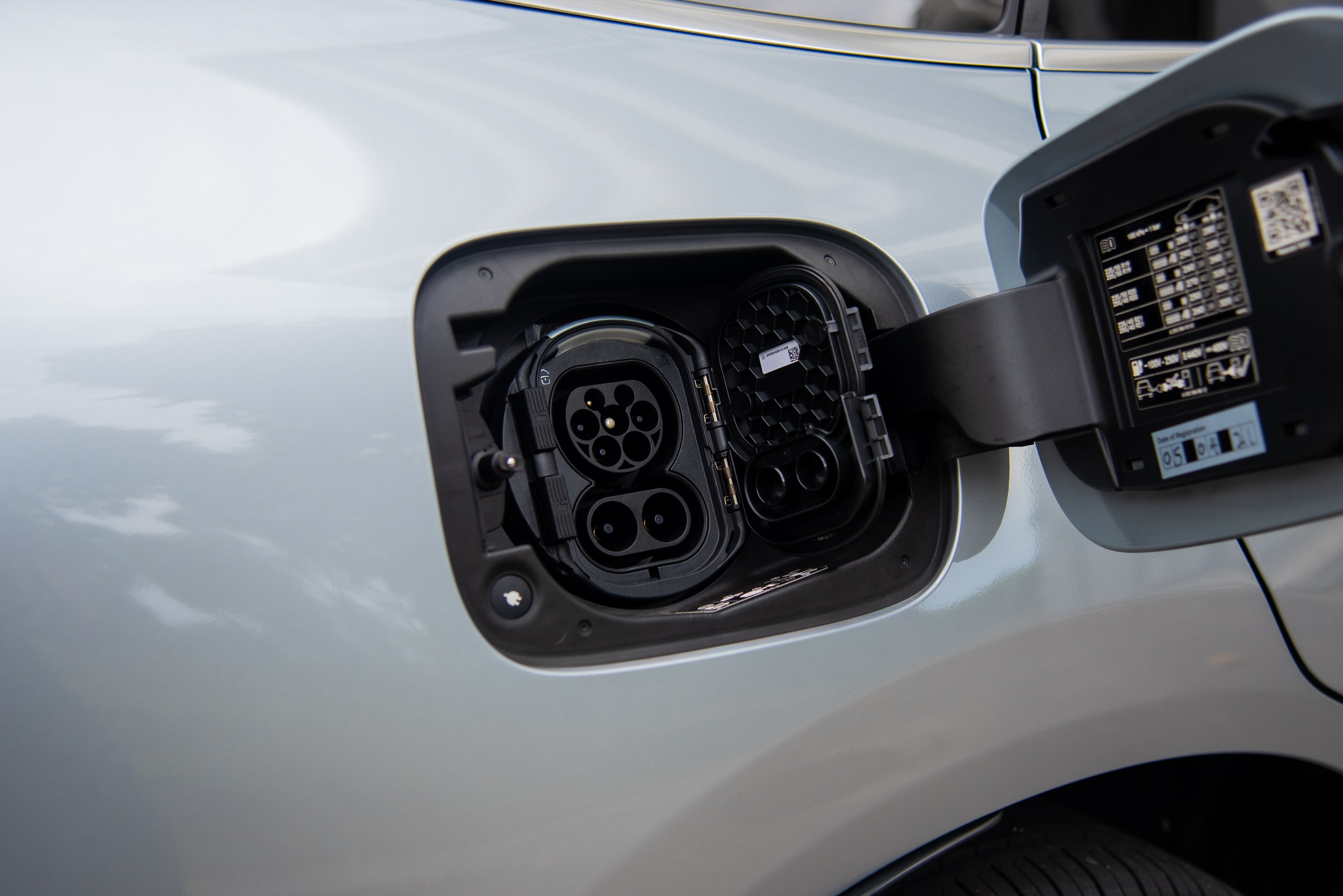
Of course, drive enthusiastically and you’ll quickly deplete the 80kWh battery pack.
The EQC's on-paper range is rated at up to 423km on a full charge. But factor in the car’s ancillaries such as the climate control and infotainment system, and you’re looking at a rather significant drop in said range.
To alleviate this, the EQC has several drive modes for drivers to choose from.
The requisite ‘Sport’, a regular ‘Comfort’, a customisable ‘Individual’ and an ‘Eco’ that 'creates' a second ‘step’ in the accelerator pedal.
In ‘Eco’, the first pedal threshold limits the car’s power output to 40 per cent, depress the throttle beyond the 'step' and you’ll get the full 100 per cent.

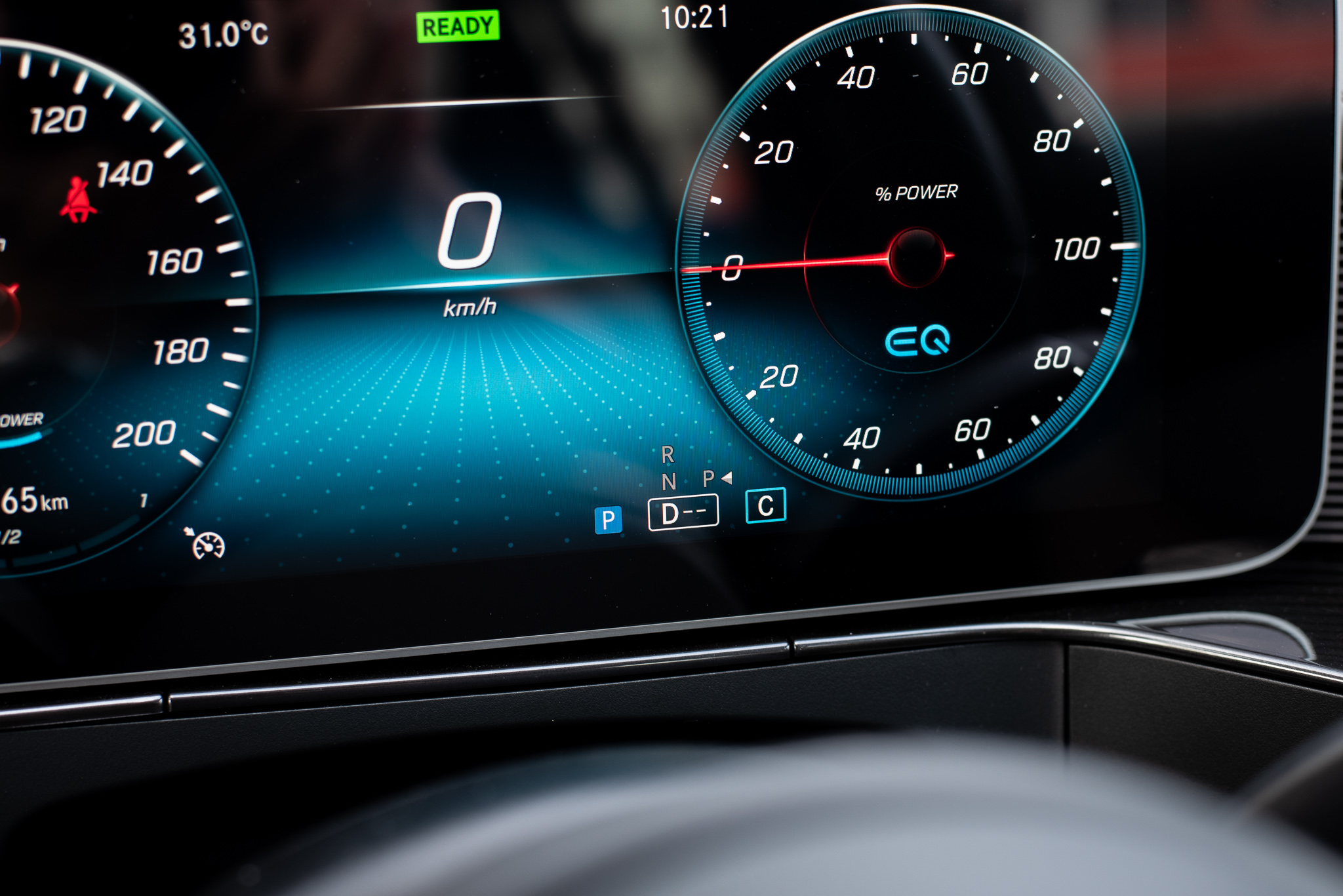
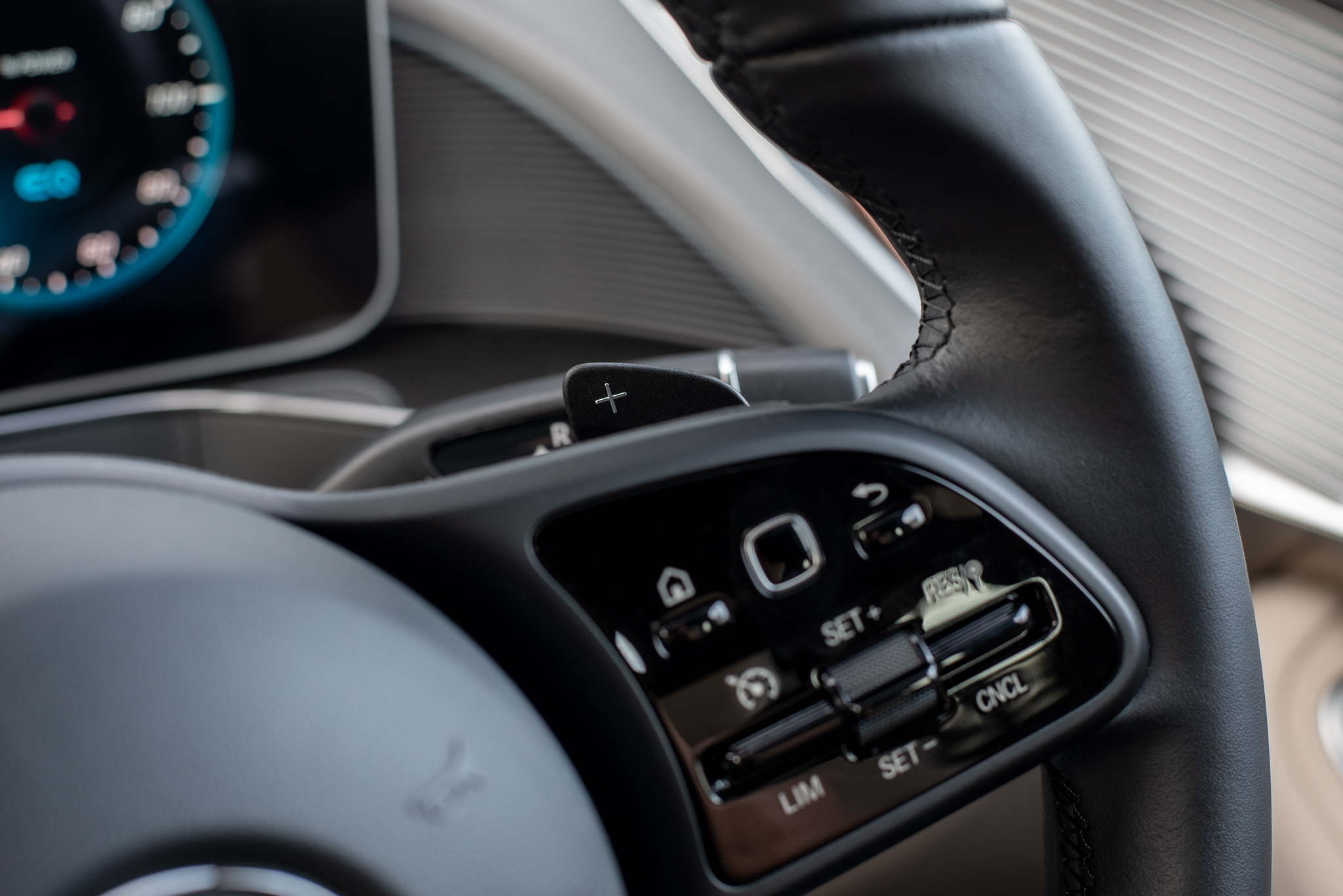
The EQC's brake regeneration system is rather neat too. By pulling on the steering wheel-mounted paddles, drivers can either allow the 2.5-tonne EQC to coast freely or engage the different levels of braking regeneration.
This is akin to engine braking with a petrol engine. It’s an intuitive system that doesn’t take much getting used to.
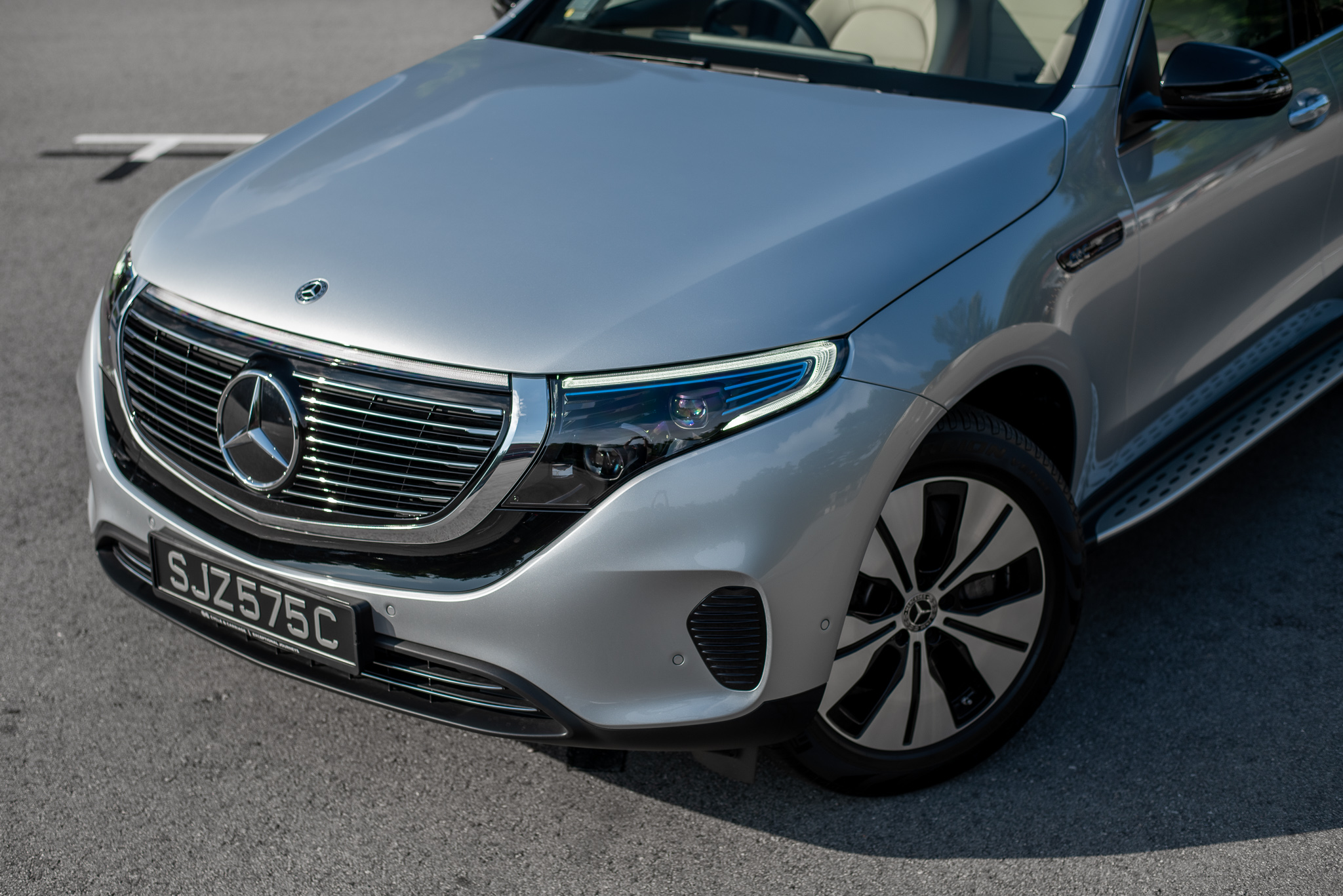
While the EQC has its shortcomings, it makes a compelling case for itself. Especially so when you stack it up against the performance-oriented GLC43 AMG. Similar power figures with a petrol bill of exactly nought.
Even to a jaded petrol-head like me, I have to admit that the EQC is an excellent value proposition. If, that is, it wasn't inhibited by the current state of local public charging infrastructure.
Despite making a relatively late entrance to the EV scene, the Mercedes-EQ brand is dead set on putting its best foot forward.
If the Mercedes EQC 400 is anything to go by, I really do wonder how the other Mercedes-EQ vehicles such as the EQA and EQS luxobarge will fare when they eventually arrive in Singapore.
PHOTOS Jay Tee
MERCEDES-BENZ EQC 400 4MATIC "Electric Art"
Electric Motor(s) 408hp, 760Nm
Battery Lithium-Ion, 80kWh
Charge Time / Type 7.5hrs / Wallbox; 40mins / DC 110kW fast charge
Electric Range up to 423km
0-100km/h 5.1secs
Top Speed 180km/h
Energy Consumption 21.5kWh/100km (avg.)
CO2 0 gkm






